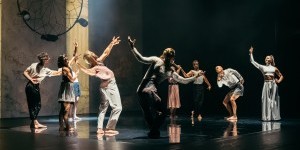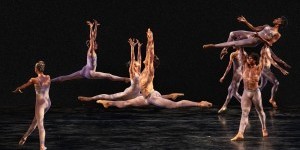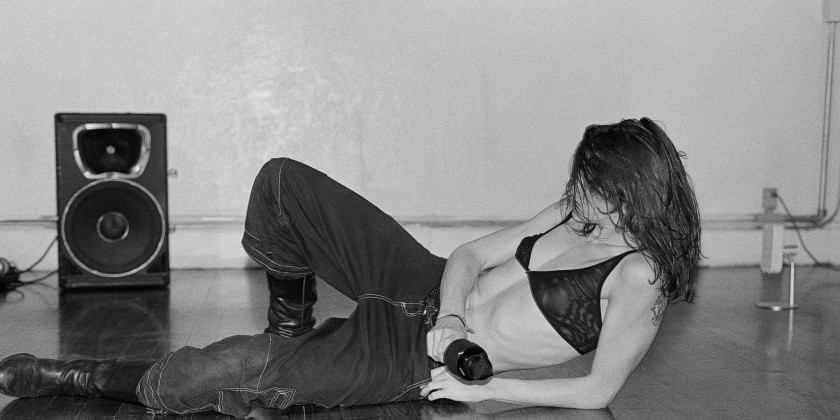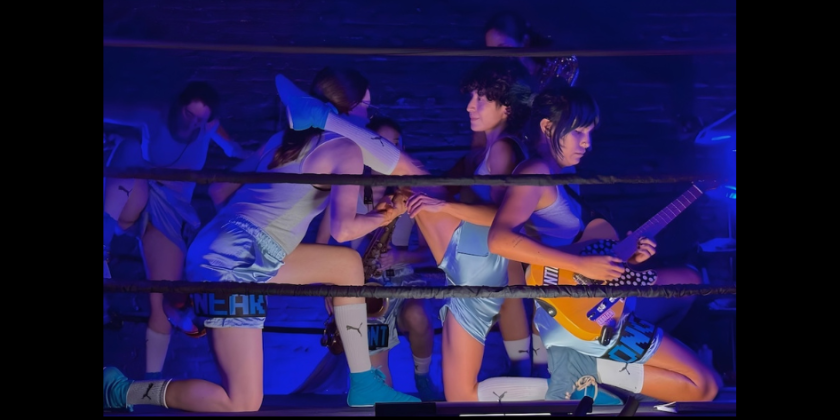IMPRESSIONS from California: David Roussève/REALITY "Becoming Daddy AF" at The Nimoy
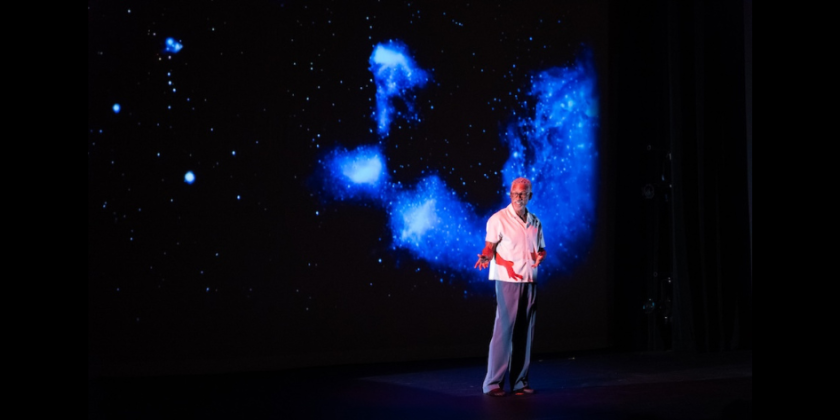
Written, Directed, Choreographed and Performed by David Roussève
Dramaturgy by Charlotte Brathwaite // Video design by Meena Murugesan
Sound design by d. Sabela grimes // Lighting design Christopher Kuhl
Costume design by Leah Piehl // Technical direction by Christopher Kuhl
Sound and Video Engineering by Padra Crisafulli // Early stage dramaturgy by Julie Tolentino
Additional production support from Gurmukhi Bevli, Harper // Justus and Leanne Iacovetta Poirier
Management and producorial support by George Lugg
Oct 17th, 2025 ( premiered at the Kelly Strayhorn Theater in Pittsburgh on September 2025)
As a child, David Roussève did splits in the bathroom, behind closed doors. He wanted to dance, but he knew his family would not accept it. He opted for secrecy, or in his words, “disengagement.”
In Becoming Daddy AF, Roussève lets the door to the emotional floodgates open. The work, which made its West Coast premiere at The Nimoy Oct. 17-18,

is his first evening-length dance theater solo in over 20 years. Despite its provocative title, Becoming Daddy AF is more intimate and stirring than jarring—though there are a couple of unexpected theatrics along the way. In three parts, Roussève chronicles his relationship to love and self-expression. It’s difficult to say, “I love you,” and he is unashamed of admitting it. His raw autobiographical stories haunt, leaving viewers to question what it means to be alive, to breathe, and, more importantly, to dance for everyone to see.

Roussève’s struggle to engage with his emotions establishes itself as a prominent throughline in the work, guiding the narrative forward with his musings on visibility. He tells his stories directly to the audience, but as he starts delving into vulnerable waters, he chokes up. It’s best depicted as he talks about his struggle with lipoatrophy, a condition where someone experiences abnormal loss of body fat, while living with HIV. He uses humor as a coping mechanism, jokingly comparing himself to a skeleton. As his emotions spill around, he struggles to speak and turns the direction of his chair away from the audience to remedy his discomfort. He’s disengaged. As he looks at the upstage corner, he shares a story about how his ex-husband, Conor McTeague, yelled at him to stop talking so badly about himself amid his search for antidotes to his lipoatrophy. McTeague’s outburst was a sign of his love, and Roussève’s confrontation with that truth is what makes it difficult for him to engage with the audience. This beat in the story cements his main conflict of learning how to love and be loved.

In part two, Roussève delves into his family history as he recounts his time at Princeton University. The decision to delve into his family legacy is a smart choice that highlights how love of the past influences love today. While digging into his family history—which includes a grandfather who wrote the first book about Black life in Louisiana and a granduncle who became the first Black architect in Louisiana—he discovered a relative who performed in minstrel shows. He makes a profoundly executed discovery that connects minstrelsy to the performance of life he put on at Princeton to succeed. Video design by Meena Murugesan, sound design by d. Sabela grimes and lighting design by Christopher Kuhl collide for a piercing depiction of minstrelsy. In a sobering monologue, Roussève discusses the performance he put on for white boys at Princeton to get a leg up and graduate magna cum laude. He depicts a different side of his journey to visibility and love, exploring the ancestral labor that shaped the visibility he has today.

The movement language of Becoming Daddy AF is soft and informed by sign language. Often, Roussève will begin phrases by signing the words he says. As the story evolves, the movement becomes more abstract as he sweeps and flows his arms around. His movement becomes sharper and more energized in times of distress.
Becoming Daddy AF is riddled with symbols that help physicalize abstract themes like love, loss and visibility. During his divorce with McTeague, Roussève tells his ex that he still loves him and asks McTeague if he feels the same way. His ex’s silent response drives Roussève to topple over the stools standing around the stage. With each toss, he fills the stools with anger and, ironically, love. He leaves one standing, a symbol that he is still holding onto hope that he will hear those three magic words. When he learns of McTeague’s death, the final stool falls. Its thump is heartbreaking. He’s losing hope that he’ll ever hear, “I love you” again. His use of props and symbols becomes central to his narrative, infusing emotion into every object set on stage.

The work concludes with one more symbol: roses. Following a spiritual encounter with his ex, Roussève becomes fully engaged in the feeling of love. He stands under a spotlight, arms wide, bathed in rose petals as “Clair de lune” plays. The imagery is ethereal. Following countless tales about his struggle to engage with his emotions, he reaches a sense of such raw vulnerability, as if he excavated every fiber of his being for all to witness—to love.
Becoming Daddy AF challenges viewers to experience the entire breadth of love, which Roussève depicts so beautifully. It isn’t just heartwarming compliments and gestures. It also arrives in the form of grief and solace. As Roussève allows the petals to brush against his skin, he asks for a collective surrender to the part of love that forms a knot in the stomach. Through dance, he lets it unwind.






